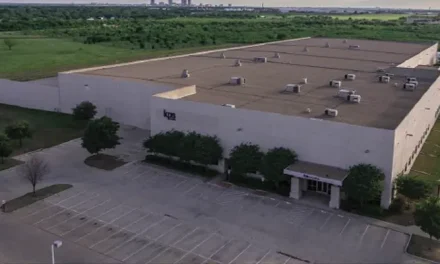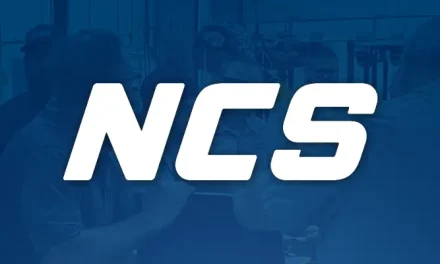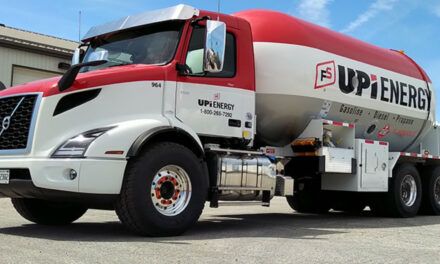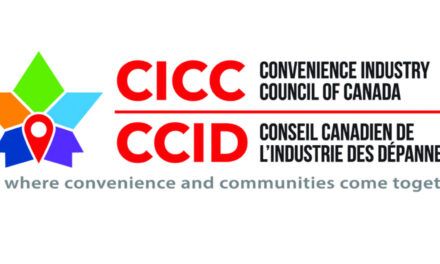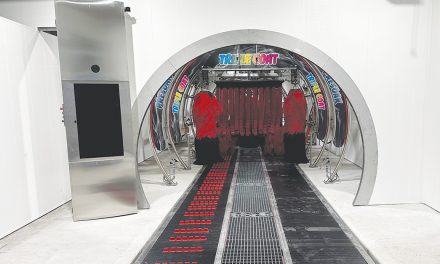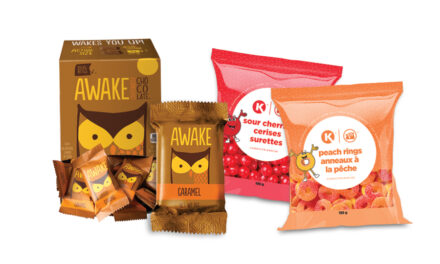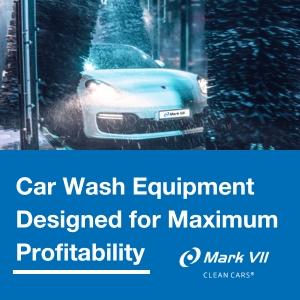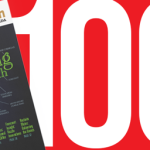
Slips, Trips & Crashes

Slips, Trips & Crashes
A crisis in the C&G channel can take on many forms. As the popular saying of Murphy’s Law states, “whatever can go wrong, will go wrong.”
By Meline Beach
Stuff happens when you least expect it. This is why it is important to have insurance and an emergency response plan in the event something terrible happens on location. Mitigating risk is the first step. Ensuring you have the right insurance coverage and knowing who to call to address any damage is another. This applies to any crisis, including slips, trips and crashes.
While some situations can be prevented with proper risk mitigation and proactive safety measures, there are some incidents that happen by fluke – completely by surprise and unavoidable.
Just ask Mandeep Pandher, who experienced a crash at his Neighbours/Petro Canada gas station in Welland, Ontario. On February 6, 2020, at approximately 8:40 p.m., a local driver accidentally drove into the store’s front door and window.
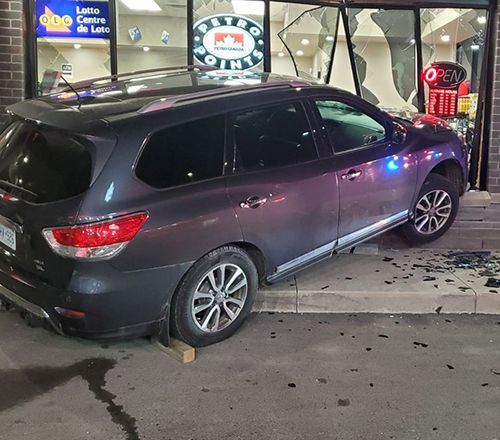

Though Pandher was not working that evening, his employee followed the emergency response plan provided by Petro Canada corporate office, as part of the company’s health and safety procedures. The employee called Pandher and the authorities immediately, after ensuring that nobody was physically hurt, including the driver.
“I couldn’t believe my eyes when I arrived moments after the incident happened,” says Pandher, who was thankful he had provided the appropriate training for his employee to know what to do in such an emergency situation. The first step is to turn off the gas pumps. The second is to ensure that no one is inside the store. The Emergency Response Protocol binder is kept beside the cash register for easy reference. “The damage was extensive, the area was already taped off and the police, fire fighters and paramedics were on site.”
The c-store was closed for four days after the incident in order to clean the mess and repair the damage, however, Pandher kept the gas bar open in an effort not to lose any further sales. While the insurance claim is still open and he continues to deal with issues with the contractor, Pandher knows the situation could have been a lot worse. His security cameras showed that two customers had just walked in front of the uncontrolled vehicle seconds before it drove into the store.


Between the insurance company and contractor, Pandher is looking forward to closing the case and continuing on with his business.
“It has been a long and difficult process to resolve,” says Pandher, who is hoping to have yellow concrete pillars installed at the front of the store to serve as a barrier and prevent this type of accident from causing so much damage to the store again.
In terms of lessons learned, Pandher strongly recommends that retailers have the contact information of a couple of trusted contractors on hand so they know who to call to assist with repairs in an emergency situation rather than just go with the first one that shows up at the scene.
While crashes are rare, slips and trips are more common occurrences in high traffic pedestrian areas.
According to Wawanesa Mutual Insurance Company, unintentional falls are a common cause of injury across Canada and pose a significant liability exposure.
Brad Hartle, senior communications specialist at The Wawanesa Mutual Insurance Company states that C&G owners have a legal responsibility to ensure their premises are safe from any harm. This duty of care requires that reasonable precautions are taken to ensure the visitor is safe while on the premises.
MITIGATE RISK
The goal is to be proactive and mitigate any risk. Take into account, the following:
- Conduct regular inspections and walk-throughs, which keeps you on top of issues as they arise. This includes parking lots, walkways and entranceways. Things to look for: potholes, cracks, deteriorating pavement and damaged floor surfaces, poorly marked ramps and staircases, inadequate lighting, loose or missing handrails or slippery stairs.
- Document your inspections and identify any hazards, which creates a formal track record that can be referenced should your actions in creating a safe environment be questioned.
- Implement follow-up procedures and create an action plan to ensure that any identified hazards are fixed. Things to do: repair or replace damaged floor materials, apply appropriate cleaning solutions to avoid unwanted residue, apply non-slip flooring materials such as metal grills or heavy-duty floor mats, apply slip-resident coating on stairs, secure loose handrails and place cautionary signage as needed, e.g. wet floor signs.
Various weather conditions can also create risk for your location. From heavy rainstorms to snowstorms, look for puddles or ice buildup on sidewalks and entranceways and be sure to document and engage appropriate snow removal and de-icing services.
“Slips, trips and fall exposures present a unique challenge in that site conditions can change frequently,” says Hartle. “By understanding these exposures and implementing risk mitigation controls, a reduction in injuries to visitors can be achieved.”
EMERGENCY RESPONSE PLAN
If you don’t have an emergency response plan, now is the time to create one. It is important to identify any risks issues or accidents that could occur and the appropriate actions to prevent, resolve and keep your business running in the event of a disruption. These plans should be reviewed and updated regularly and communicated with all staff to confirm awareness and understanding. It’s also equally important for staff to know where safety equipment and supplies are stored and how to properly use them, including first aid kits, fire extinguishers and defibrillators.
INSURANCE
According to Economical Insurance, it’s important for C&G retailers located across Canada to look for a protection plan around slips and trips of customers, and property coverage for damage to the store, equipment or stock from accidental crashes. This is commonly covered under a commercial general liability policy. It’s typical for coverage to vary between insurance companies and therefore it’s important to review the details of your policy with your insurance provider. For example, gas station proprietors would need to confirm that fuel pumps are covered under their policy as this is something that may or may not be covered by varying insurance providers.
In the event a claim is made due to an accident or incident on your property, it’s important to notify your broker or insurer right away. A retailer should expect to provide a statement and paperwork detailing the extent of damage to their premises or goods. If a retailer is also in a position where they are being sued in regards to the incident, they will also need to share any legal materials they’ve received and anything that might help the insurance company to defend them, such information from witnesses or surveillance footage.
C&G retailers can expect their insurance provider to promptly investigate the claim to determine the best plan of action; following the claim assessment insurers will resolve the claim or defend the claim in court if necessary, in the case of a legal dispute.
The Insurance Bureau of Canada recommends that policy holders apply risk mitigation strategies and establish a relationship with your insurance representative in order to receive the best advice on having the right coverage for your business needs and any applicable savings on your premiums.
Slips, trips and crashes – these types of risks can be best managed by keeping your premises in a good state of repair, addressing issues as soon as they arise, maintaining updated documents and applying appropriate actions as soon as incidents occur.
Don’t leave these situations to chance. Keep Murphy’s law in mind and be prepared.
Meline Beach is a Toronto-based communications practitioner and frequent contributor to Convenience & Carwash Canada. In addition to freelance writing, Meline provides communications and public relations support to businesses across Canada. She can be reached at www.mlbcomms.ca

